Prince and the Purple Rain Era Studio Sessions
Prince and the Purple Rain Era Studio Sessions
1983 and 1984
Duane Tudahl
Rowman & Littlefield
Lanham Boulder New York London
Published by Rowman & Littlefield
A wholly owned subsidiary of The Rowman & Littlefield Publishing Group, Inc.
4501 Forbes Boulevard, Suite 200, Lanham, Maryland 20706
www.rowman.com
Unit A, Whitacre Mews, 26-34 Stannary Street, London SE11 4AB
Copyright 2018 by Duane Tudahl
All rights reserved . No part of this book may be reproduced in any form or by any electronic or mechanical means, including information storage and retrieval systems, without written permission from the publisher, except by a reviewer who may quote passages in a review.
British Library Cataloguing in Publication Information Available
Library of Congress Cataloging-in-Publication Data
Names: Tudahl, Duane.
Title: Prince and the Purple rain era studio sessions : 1983 and 1984 / Duane Tudahl.
Description: Lanham : Rowman & Littlefield, [2017] | Includes bibliographical references and index.
Identifiers: LCCN 2017015244 (print) | LCCN 2017016761 (ebook) | ISBN 9781538105504 (electronic) | ISBN 9781538105498 (hardback : alk. paper)
Subjects: LCSH: PrinceCriticism and interpretation. | Rock musicUnited States19811990History and criticism. | PrinceChronology. | Prince. Purple rain.
Classification: LCC ML420.P974 (ebook) | LCC ML420.P974 T83 2017 (print) | DDC 781.66092dc23
LC record available at https://lccn.loc.gov/2017015244
 The paper used in this publication meets the minimum requirements of American National Standard for Information SciencesPermanence of Paper for Printed Library Materials, ANSI/NISO Z39.48-1992.
The paper used in this publication meets the minimum requirements of American National Standard for Information SciencesPermanence of Paper for Printed Library Materials, ANSI/NISO Z39.48-1992.
Printed in the United States of America
Foreword
There are many things about Prince that interest me, some of which were more powerful during his life, some of which were more powerful just after his death, and some of which are more powerful now, a year or so after his death. I could make a long list: his fashion sense, his sense of humor, his importance as a central cultural figure, his relationship to other stars, his ability to inspire artists in every genre, and so on. But one thing has remained consistent, no matter when Ive thought about it, and thats my interest in Princes studio process.
In 2016 I wrote a book called Something to Food About , where I talked about the creative lives of chefs, and that was a backdoor way into some of the issues of creativity that are always on my mind: when an idea starts, how much it has to be refined, how many collaborators are useful for perfecting it and how many run the risk of jeopardizing it, when other creative professionals know that they have hit the sweet spot. That book was fascinating for many reasons, but one of the main reasons was that it reminded me that I have an odd aversion to asking those same questions of musicians. I dont know if its a form of superstition or a form of competitiveness, but it was somehow safer for me to explore those questions when it came to chefsand I noticed that the same thing was true of comedians, and painters, and authors. I think I agreed in some ways with the people who warned that it can be tricky to know too much about an artists process, that it can turn a beautiful thing into a sausage factory, where you see the meat paste before its squeezed into the casing.
But Prince has a special status. Learning about his process isnt a sausage factory. Its a dream factory. (Thats an inside jokeits the original name of the sprawling album that eventually became Sign o the Times ). As long as I can remember, Ive been preoccupied with the minutiae of Princes recording sessions. Ive wondered, guessed, and researched, trying to figure out how much he cooked up himself, how much others brought to the table, how long songs hibernated before they woke up, and which songs magically took flight immediately. (I know I mixed a bunch of metaphors there. I dont care. This is a piece about Princes art, not a rhetoric lesson.)
Take Purple Rain . No, dont take Purple Rain . Leave it for me. I dont know what Id do without it. Since I first heard When Doves Crya song that cemented what was already a serious Prince obsessionas a teenager, I have obsessed about exactly how those songs came together. But take the details of Purple Rain . Its a fascinating record, partly a live album recorded at First Avenue, partly Princes attempt to capture the energy of the mid-eighties arena rock that was dominating the charts, and partly a further exploration of his increasingly experimental funk-rock. I teach a class at the Clive Davis Institute of Recorded Music at NYU. Ive done a curriculum based on seventies funk music in general. Ive done a curriculum based on Michael Jacksons Thriller . Ive even done a course on Prince. But Purple Rain is the great whitish-purplish whale, as far as an album like that is concerned. Id love to teach a class on it, with all the intricate details.
Which isnt to say that I could have been the one to collect all those details. Thats where Duane Tudahl comes in. Hes tireless where other people would be exhausted. Hes comprehensive where other people would be uncomprehending. He has personally brought together hundreds of hours of interviews with all the people involved in the making of that record. Hes also been given access to material from two journalists and archivists associated with the Prince sound, Alan Freed and Per Nilsen. And maybe more amazingly, hes gotten hold of the daily studio work orders from studios so that he can piece together the massive puzzle of how the record came together.
I dont want to ruin any surprises. You should read this book. But as you read it, you should marvel at all the things its not. Thats a strange thing to say, but I want to say it again. Think of all the things this book is not. There are wonderful books about Prince that are preoccupied with his cultural significance, or the meaning of his music, or the way he changed sexuality for our generation, or any of the other things I mentioned in the first paragraph. I have taught some of them in my class. I have written introductions for some of them. I wont mention them here. That would be churlish. But there are no other books that do this kind of deep dive into the primary source material for an album and reward that kind of diving in incredible ways. Duane has said that he hopes this is the first of many books that handle Princes catalog in this way, that go through his recordings one by one and try to mine out of the studio logs and musician recollections a fuller picture of whats there. I hope thats true. I hope that when I am an old man with a long beard I can look down my Prince bookshelf and see, next to the other books Ive taught, next to the other books Ive written intros for, Duanes whole series, paralleling Princes entire body of work. But dont take my word for it. Take James Browns word for it: Get up and take the book off the shelf, get into it, and get involved.
Ahmir Questlove Thompson
Preface
The music I make a lot of the time is reflective of the life I am leading. Prince
Some musicians are forever linked with a specific recording studio: The Beatles at Abbey Road, Elvis at Sun Records, and Hendrix at New York Citys Record Plant. Often the studio helped define and shape the musicians, exposing them to a vibe that brought out something timeless. Fleetwood Mac could have recorded Rumours anywhere, but the Record Plant in Sausalito, California, provided the womblike atmosphere that helped nourish their album of self-reflection. Recording at Big Pink in Upstate New York literally changed the direction of Bob Dylans career, just as time at Los Angeless Sunset Sound changed the career of another Minnesota son. To most people, Prince is forever bonded with Paisley Park, but before Paisley Park, the biggest albums of his career were recorded at Sunset Sound Studios. In fact, his success from those sessions gave him the financial strength necessary to build Paisley Park just outside Minneapolis, a studio patterned after elements from Sunset Sound.
Next page

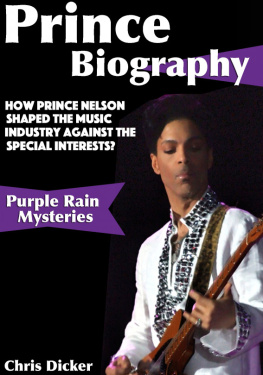



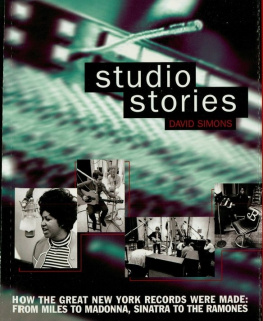
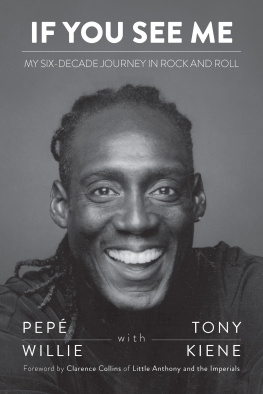
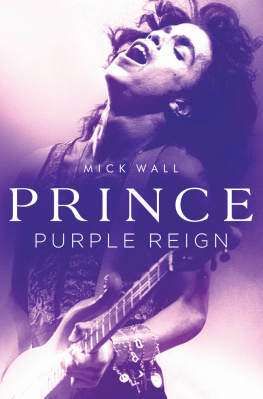
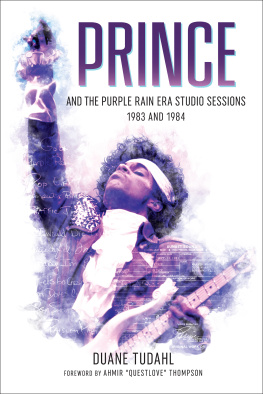
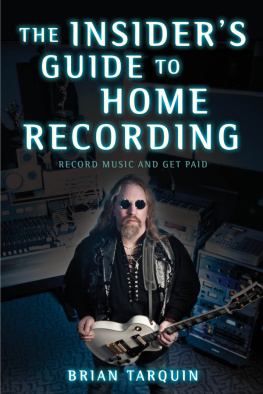

 The paper used in this publication meets the minimum requirements of American National Standard for Information SciencesPermanence of Paper for Printed Library Materials, ANSI/NISO Z39.48-1992.
The paper used in this publication meets the minimum requirements of American National Standard for Information SciencesPermanence of Paper for Printed Library Materials, ANSI/NISO Z39.48-1992.